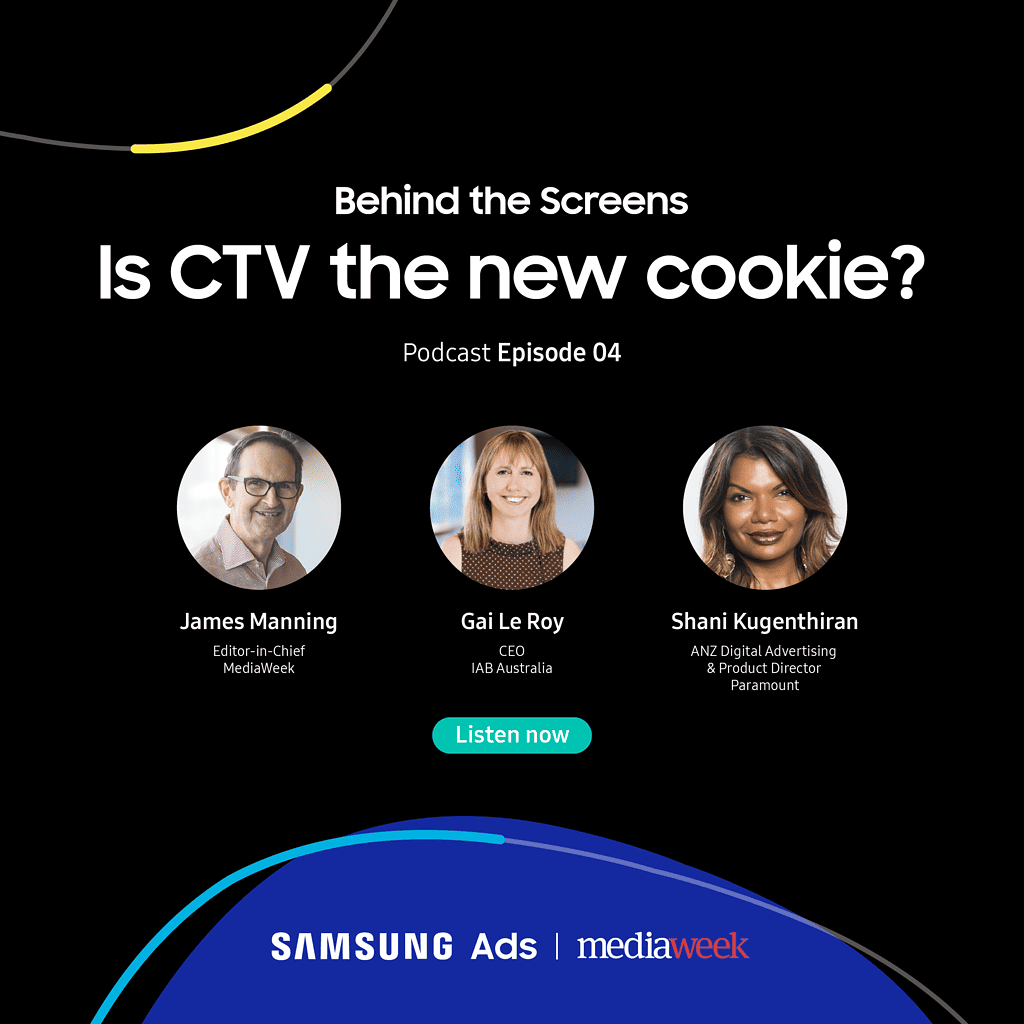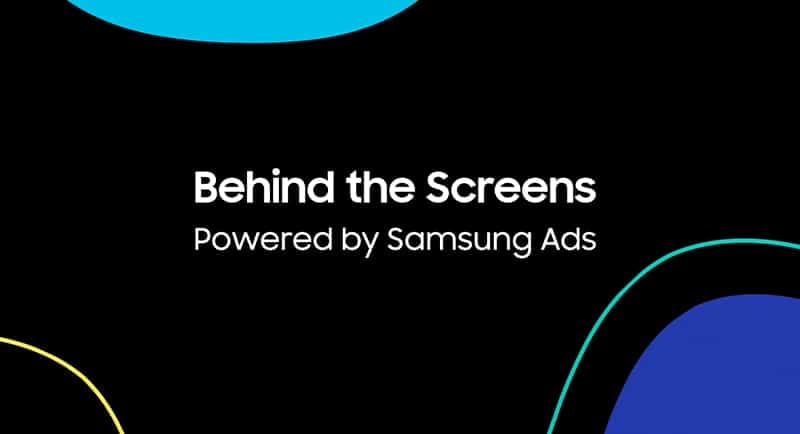This month, Mediaweek and Samsung Ads launched a video series called Behind the Screens.
The five-part shortform series presents interviews conducted by Mediaweek editor-in-chief James Manning.
Each episode features a key player in the TV sector who shares insights about the latest trends in the sector from changing viewing habits to advertising business models. The guests have been brought together to discuss challenges, opportunities and the transformation of the TV landscape.
Guests across the series feature executives from Nine, Seven, Foxtel Media, Paramount ANZ, the IAB, EssenceMedia and Samsung Ads.
Samsung Ads is Advanced TV advertising. Its smart TV advertising solutions are built on data from millions of Smart TVs in Australia.
This week we release Episode Four: Is connected TV the new cookie? Our special guests are IAB chief executive Gai Le Roy and Paramount ANZ’s digital advertising and product director Shani Kugenthiran.
In the first episode Cathy Oh, VP & global head of marketing Samsung Ads, spoke about how technology is driving viewing behaviours, the future of connected TV advertising and key questions for marketers.
Watch episode one of Behind the Screens here.
In the second episode, Mark Frain, CEO Foxtel Media, and Nick Thomas, chief investment officer at EssenceMediacom Australia spoke about the importance of attention as a measurement of advertising success.
Watch episode two of Behind the Screens here.
In episode three, Richard Henson, Seven Network director distribution & content partnership, and Alex Spurzem, Samsung Ads ANZ general manager discuss the growth and opportunities offered by FAST channels.
Watch episode three of Behind the Screens here.
Here are the highlights from episode four with IAB chief executive Gai Le Roy and Paramount ANZ’s digital advertising and product director Shani Kugenthiran.
What is the impact of the end of third party cookies on CTV?
Le Roy: Google confirmed they will retire third party cookies at the end of 2024. Cookies will mainly impact the open web, whereas CTV has been less reliant on cookies. Cookies are like glue holding bits and pieces together. That glue will go across different areas and new ways will come to create that identity across different options for marketers.
Kugenthiran: For us CTV represents an opportunity because we can gather first party data with consent through opt-in mechanisms. I feel advertisers are in a better place than we think they are. In terms of alternate solutions for their data collection and campaign effectiveness as well.
Le Roy: Data clean rooms are really a sexy topic right now, and they are an important mechanism. It is a virtual space where you can combine data that is encrypted and then you are not actually sharing it with another partner. It is a place where you can look at improving addressability, aggregating data in terms of understanding reach and frequency and enhancing insights. It’s a way of handling data that is a lot lower risk.
What is the expectation from advertisers about how up-to-speed you need to be on data?
Kugenthiran: We have to be privacy first. Data clean rooms are a great opportunity for us. When we can safely share first party data in a privacy compliant manner. When you are pulling together BVOD insights combined with other data sources you get a really comprehensive view of the consumer. That allows advertisers to build full funnel strategies that speak to all media metrics.
Where are we with smart TV adoption in Australia?
Kugenthiran: It is about 84% with two TVs per household connected in some way. Either plugged in directly or using a smart TV connected device. When we think about connected TV adoption the numbers are increasing. When we talk about consumption, OzTAM VPN data talks to about 77% of all BVOD viewing being conducted on a connected TV.
If you take all those stats together you learn we are well established in terms of connected TV adoption.
Tell us about the experience at Paramount where it led the way in BVOD with 10 Play being adopted by 10’s younger audience.
Kugenthiran: CTV data is more important because it allows for a more enhanced and accurate view of the user. From a user perspective we don’t want it to be intrusive. We want it to be immersive because on the flipside it delivers better outcomes. We can go beyond incremental reach to television, we can go beyond delivering an impression or a completed video view.
Connected TV can cater to full funnel media metrics for an advertiser and also support and drive marketing and business outcomes.
What’s next for advertisers and CTV?
Le Roy: CTV consumption will continue to grow. It will become more baked into the whole eco-system and we are going to start seeing different types of activity on the big screen and how the commercialisation of FAST channels from different players in the market can grow in a healthy way in the industry.

You can watch and podcast Behind the Screens powered by Samsung Ads.
Episode one podcast
Episode one video
